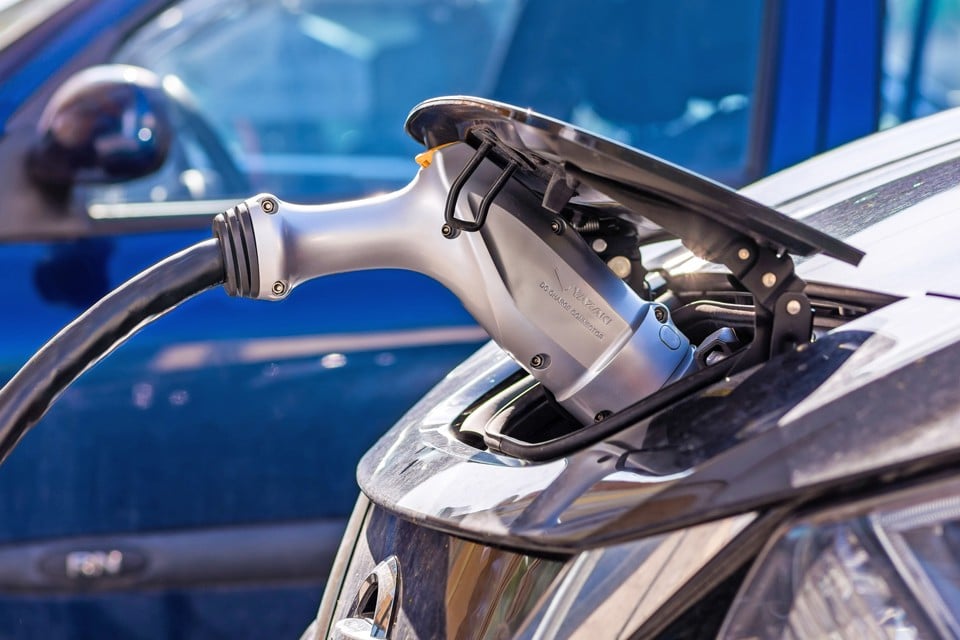As the uptake of electric company cars increases due to favourable benefit-in-kind (BIK) tax bills and increasing vehicle availability, it will become more important for organisations to introduce charge points at workplaces. Here are the key questions to consider.
How many charge points do you need?
This is a decision based on many factors including the number of electric cars operated, the types of chargers required, the number of available parking bays and the available budget for the installations.
“It’s important to think about who actually needs to charge,” says Tom Callow, head of external affairs at BP Chargemaster.
“For example, employees who have a homecharge unit and drive their own electric car to work on a commute of up to 20 miles probably don’t need to charge at work, whereas a field-based employee who drives more than 100 miles to the office on a particular day may well need to charge.
“One population that is worth considering is employees who drive their own or a company electric car who cannot charge at home.
“For those people, a workplace charge point could become their most frequently-used and enable the majority of their journeys.”
As well as planning for an existing electric fleet, they should not underestimate the importance of forward planning, says James McKemey, head of insights at Pod Point.
“This can take the form of simply having a plan for how further provision will be made in future, and what this process will involve, but, potentially, also a modest degree of over-provision,” he adds.
“From experience, charge points installed initially by workplaces as ‘surplus’ seldom remain idle, but very quickly become an essential and regularly used service.”
What speed charge points do you need?
As impressive as the headline-grabbing figures for the latest, higher-powered charge points are, faster isn’t always better – or necessary – for organisations.
Typically, a 7kW charge point will provide an EV with up to five miles of charge in 10 minutes. An ultra-fast 150kW unit gives up to 100 miles in the same time.
“Organisations often think the more powerful the charger the better but, in reality, the requirement for EV charging will depend largely on the number and types of vehicles used,” says Alex Bamberg, managing director of Engie EV Solutions.
“Organisations must also ascertain what power is available to them, as rapid chargers providing 150kW+ will clearly require much more power than smaller chargers offering 22kW.
“Chargers can also be installed that provide ‘load balancing’, this adds greater flexibility to the installation and can be configured as per customer requirements to provide more or less power across a number of chargers to ensure vehicles are charged dependent on priority.”
The costs of buying and installing charge points varies massively: a 7kW charge point capable of charging two vehicles at the same time can cost from £4,000 for an organisation to install, while a 150kW unit is upwards of £100,000.
As well as cost and the electricity capacity of the site – if demand exceeds supply, a substation may need to be installed at significant expense – organisations need to consider the ‘dwell’ time of its EVs, i.e. how long they are parked up for.
“If vehicles are going to be stationary for most of the working day then lower cost, slower chargers are suitable,” says Ellie Grebenik, senior programme manager – Scottish transport at Energy Saving Trust.
In these circumstances, McKemey says it would be “unwise” to install high-powered DC chargers.
“They are expensive, consume valuable electrical capacity and require drivers to be on hand at short notice to move their cars away from the chargers at the end of charge – interrupting their work,” he adds.
“Conversely, if drivers only stop at the workplace for short periods such as for shift changeovers in the midst of high-mileage activities, then high-powered charging infrastructure is vital.
“Some workplaces will benefit from a mix, with fewer higher-powered charge points offering flexibility for those stopping in at the workplace on longer journeys, while most employees plug into 7kW chargers for long periods.”
Where should the charge points be located?
Each organisation will have its own considerations for planning the location of charge points, says Grebenik.
“Ideally, chargers should be placed in prominent locations where they can be easily be found and can help display the organisation’s sustainability credentials, but this must be balanced against install logistics and cost,” she adds.
A key factor is where the site’s power supply is located. The closer charge points are, the less digging needs to be carried out and the lower the cost of the install.
Callow adds: “The electricity supply that will ultimately power the charge points will typically be found within a main building, which is why charge points tend to be found adjacent to them rather than in the middle of a car park.
“Locating charge points near the entrance to the workplace could be a perk, a bit like VIP parking spaces, although it could also make them more open to abuse or ICEing by drivers of petrol and diesel cars if the signage is not clear enough.
“In terms of the physical positioning of the charge points, one consideration in that the charging port on many electric cars is on or near the front of the vehicle, which may impact workplaces where there is a reverse parking policy.”
Once the workplace charge points are installed, charging bays ideally need both eye-level signage indicating what they are and who they are for, as well as bay markings on the ground, says Callow.
“There is now accepted standardised signage with wording such as ‘Electric vehicle recharging point only’, rather than simply ‘Electric vehicles only’, which can give the impression that EVs could use these bays for parking and not charging,” he adds.
Can you install charge points on leased sites?
An obstacle faced by many organisations is they lease the site of their workplace, meaning they need permission from their landlord before installing charge points.
“That’s something that companies have to think about,” says Rob Anderson, senior fleet specialist at Cenex. “We’ve had organisations say that they are tenants so cannot make any changes to the building because of their rental contract.
“But, having had a chat with some property lawyers, a lot of landlord agreements and tenancy agreements do have clauses regarding improvements to the building.
“Charge points can easily be seen as improvements, so organisations could approach their landlord and say the work would be improving the building.”
What Government support is available?
Under the Government’s Workplace Charging Scheme (WCS), organisations can receive grants towards the upfront cost of the purchase and installation of charge points.
The contribution is limited to 75% – or £350 per socket – of these costs, up to a maximum of 40 sockets per company. These can be on different sites.
If, for example, an organisation applied for support for 10 sockets initially, it would later be able to apply for further vouchers for funding provided the total applied for does not exceed 40.
However, all installations included on a single voucher must be the subject of a single claim: once a voucher has been redeemed it cannot be re-used even if the number of sockets installed is fewer than that specified on the voucher.
Should you charge drivers for using the charge points?
Electricity is not classed as a vehicle fuel by HMRC, so there are no BIK tax implications if an organisation wishes to provide free charging to employees.
Many do currently offer free charging as a perk to staff, while it can also be used as an incentive to increase EV uptake among workers.
“The costs are not astronomic, but organisations may not wish to sustain (free charging) at scale, in which case they can simply set a fee for usage,” says Anderson.
Typical charging schemes include billing for either the amount of electricity used or the length of time a vehicle has been plugged in.
“This may mean that a driver can use a 22kWh charger for four hours at a fee of ‘x’ amount, but if they go beyond that time then they will be charged an additional £5 or £10 an hour after that,” says Anderson.
This gives drivers an incentive to unplug their vehicle when they have enough charge rather than blocking the charge point and preventing other EV drivers from using it.
“This can help the business manage charge point use as well as help the drivers take ownership over how they are charging,” adds Anderson.
Charge points can be operated by staff RFID (radio-frequency identification) cards, apps, or contactless cards provided by the company which installs and manages the units.
“Contactless payment methods have been successfully implemented in some charge points and this transaction feature is growing,” says Grebenik.
“Some organisations with on-site charge points for employees have created payment schemes, including fixed-price plans for access.
“In addition, the above mentioned back-office systems can allow payment to be arranged by user groups by, for example, nor charging employees but charging visitors – or vice versa.”
If drivers have to pay for using workplace charge points, they can claim for business mileage from their employee with the Government setting its advisory electricity rate (AER) at 4ppm.
How do you manage the use of charge points?
At the outset, organisations need to consider whether they will take on the management of the charge points once they are installed, or whether they use a charge point provider to supply this service.
“Using your own internal resources to manage the charge points means you get the cost benefit directly, but you also have the outlay of any spares or maintenance,” says Anderson.
“Organisations often get a charge point operator to install the system and then join their scheme. That takes some of the risk away because the organisation is not managing or maintaining the charge points itself.
“If you are doing that, you need to have long conversations with the charge point supplier about service level agreements, how long it will take to fix any outages, etc.”
Using a charge point supplier which also has a public charging network – such as BP Chargemaster and Engie – may mean the workplace set-up can be integrated with their public infrastructure so all charging can be included on one monthly bill.
Who is using the workplace charge points, when and for how long can be managed through groups on media channels such as WhatsApp or MS Teams, says Anderson.
“We’ve also seen some organisations’ drivers put little notecards in their windscreens to say ‘I’m on charge, call me when I’ve finished’ and then that individual will come out and move their vehicle,” he adds.
“That sort of card can be useful to some extent, but I think we are going to find the more online, shared calendars approach is going to work better.”
Pod Point says if chargers are over-subscribed, a simple morning and afternoon shift that switches over at lunchtime can work well.























David Dunn - 22/07/2020 16:06
As a fleet manager looking to start electrifying the fleet this article has some great points. I have a meeting this week about adding electric vehicles to our fleet and some of these points will come in very useful. Fortunately our site has a sub station onsite which we will be able to utilise again if we fit charging points and we can even have public charging points for the other local businesses and residents to use.